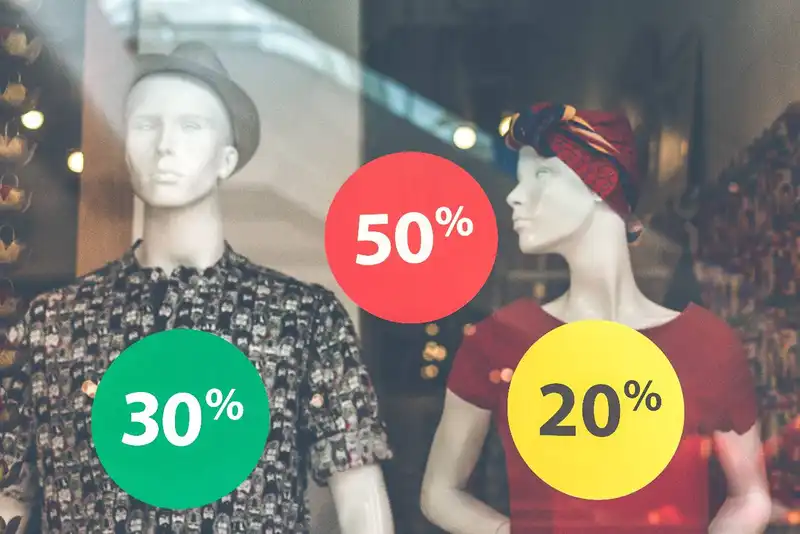12 Retail Pricing Strategies to Boost Profit Margins
Even if a company stocks high-quality goods it will struggle to generate sales and profits if the products are priced inappropriately. While setting a high price may drive customers away, a low price may do the same if shoppers perceive the item to be cheap.
By learning the most common retail pricing strategies, companies can determine which method makes the most sense for their goods and services.
12 Pricing Strategies

There are various retail pricing strategies that businesses can use, each having its own unique short- and long-term objectives.
1. Manufacturer Suggested Retail Price
The manufacturer suggested retail price (MSRP) standardizes the cost of goods across several locations, making it universal to customers regardless of which sales channel they prefer. MSRP, also known as cost-based pricing, is typically used when mass-producing products such as appliances.
This strategy takes the production expense into account to ensure that both the manufacturer and retailer have a stable profit margin. Typically, a manufacturing company distributes its goods at approximately half the MSRP. This enables the retail store to mark up the goods to generate a profit.
Pros
- MSRP eliminates the guesswork of pricing goods at the retail level.
Cons
- MSRP can reduce a business's competitive edge, as the price is often standardized across other companies.
2. Keystone Pricing

The keystone pricing method doubles the wholesale cost to produce the standard retail price, ensuring income from the sale covers production expenses. While similar to the previous pricing strategy, MSRP does not necessarily have to reach double the wholesale value for the markup.
Pros
- Keystone pricing requires little calculations, saving retailers time and labor costs.
Cons
- Keystone pricing does not work for expensive goods, as the markup may not create a large enough profit margin.
- Keystone pricing does not work for extremely cheap goods, for doubling the cost may drive away sales.
3. Bundle Pricing

Bundle pricing, also referred to as multiple pricing, is when retailers sell a group of products together for one price. This is typically seen in small, cost-effective products, such as socks or hand towels.
Many businesses prefer bundle pricing as it eliminates the need to market several prices. Instead, retailers can just run a single promotion for all items. Bundled products also attract many customers, as they believe bulk items offer more value at a lower price.
Pros
- Bundle pricing is great for turning over slow-moving products by bundling them with popular items.
Cons
- Once a product is bundled at a lower price, it is difficult to sell it alone at its original price.
4. Discount Pricing

Discount pricing sells products at a lower price through markdowns, sales, and even coupons. These discounts can be sent directly to customers via personalized campaigns or standardized through in-store sales.
While many retailers are reluctant to markdown items as it reduces the profit margin, it is a great tool to attract new customers and sell old stock.
Pros
- Discount pricing is excellent for getting rid of seasonal and low-demand items.
Cons
- Retailers that use discount pricing too frequently can lower the customers' perceived value of their brand.
5. Penetration Pricing

Penetration pricing initially establishes low prices to attract customers and introduce the product line. This strategy is often used by new brands when first entering a market. The success of this method relies on heavy word-of-mouth advertising so businesses can save on marketing promotions.
Pros
- Penetration pricing helps new businesses gain a customer base and competitive edge in a new market.
Cons
- If retailers suddenly increase prices once they've established a foothold in the market, consumers may take their business elsewhere.
6. Loss-Leading Pricing

Loss-leading pricing attracts customers by offering a discount on a popular item with the intention of selling other products alongside it. This strategy aims to counteract the profit loss from the discounted item by selling other goods. This requires employees to try and up-sell products.
Pros
- Loss-leading pricing generally increases the average order value (AOV), driving revenue.
Cons
- If employees are too forceful with their product suggestions, retailers risk losing sales and returning customers.
7. Psychological Pricing
Psychological pricing, also known as charm pricing, uses the theory that consumers gravitate towards prices that end with 5, 7, and 9. For example, instead of pricing an item at $2, retailers will often price it at $1.99. While there is only a cent difference, customers perceive the latter price as a much better value.
Pros
- Psychological pricing is great for generating impulse buys on low to mid-priced products.
Cons
- This strategy does not work for luxury brands, as customers may perceive the good to be cheap.
8. Competitive Pricing

Competitive pricing references competitors' strategies as a benchmark to set slightly lower prices. However, in order to offset the smaller profit margin, retailers must increase their AOV.
Pros
- Competitive pricing is great for retailers trying to gain a foothold in a flooded market.
Cons
- This strategy is not ideal for small businesses, as they must sell large volumes of items in order to generate a profit.
9. Premium Pricing
Premium pricing is the opposite of competitive pricing, as it offers products at a higher price than competitors.
Pros
- If used correctly, premium pricing can help a brand's perception of being luxurious and expensive.
Cons
- Premium pricing is not ideal for demographics that seek the most cost-effective goods.
10. Anchor Pricing

Anchor pricing places high-ticket and discounted items beside each other so customers can easily determine how much they can save. The original price serves as the anchor or reference point so shoppers can evaluate the savings of the markdown product.
Pros
- Comparing prices gives customers an incentive to buy discounted items.
Cons
- If the anchor price is too high, customers can quickly look up if items are cheaper elsewhere.
11. Channel-Based Pricing
Channel-based pricing is used by omnichannel retailers, as businesses can set different prices for the same products across their sales channels.
Pros
- This strategy is great for retailers who are trying to increase sales in a specific channel.
Cons
- Some customers may feel cheated if they buy a product from one channel at a higher price to find it was cheaper on another platform.
12. Wholesale Pricing

Wholesale pricing is used for businesses that sell products to other companies rather than directly to the consumer.
To calculate the wholesale price, retailers must determine the cost of goods manufactured (COGM), or the total of material and labor expenses. Then the item is marked up by at least 50% to secure a healthy profit margin.
Pros
- Wholesale pricing is excellent for moving large amounts of slow-turning products.
Cons
- In order for this strategy to be sustainable, businesses must maintain a high sales volume.
By choosing the appropriate pricing strategy, retailers can improve their brand's perception and average sales volume.






